Located on the eastern plains of San Juan de los Planes, Rancho San Martín is set within a majestic Cardón forest — one of the most important and extensive in the world.
Pachycereus pringlei (also known as Elephant Cactus, Cardón or Cardón Pelón) is a species of cactus native to northwestern Mexico.
Initially, we planned to develop the property to provide much of the organic produce for our other ranches. In order to mitigate water consumption, we implemented land sculpting, soil building techniques and other dryland farming practices with surprisingly good results. Soon, however, we realized that saltwater intrusion had come all the way up the valley to the property's well, almost 12 kilometers inland. Because we did not want to contribute to further lowering fresh water levels and damaging the aquifer*, we changed our focus and decided to produce honey.
Today, we plant native and drought-tolerant flowering trees, shrubs and flowers that bloom in sequence and encourage our bees to thrive. Some of the plantings, such as “palo de arco” (Tecoma stans) also provide construction materials for our other properties. Additionally, we plan to experiment with other high value, low water crops, such as native jojoba and moringa for oil. Efren, our ranch caretaker, harvests wild Cardón fruit, looks after the native plants nursery, and ensures that the ranch is running smoothly.
Our mobile bee colony spends much of each year in this setting. To increase honey production, we will be adding more beehives and growing additional native plant species that are specifically attractive to bees and sequential in their flowering.
Building Scientific Capacity
In November 2017, a team of 37 binational, multidisciplinary scientists and students initiated studies of the Cardón forest in and around Rancho San Martín. The photograph above, as well as the sunset and the elf owl (Micrathene whitneyi) below, are courtesy of the San Diego Natural History Museum.
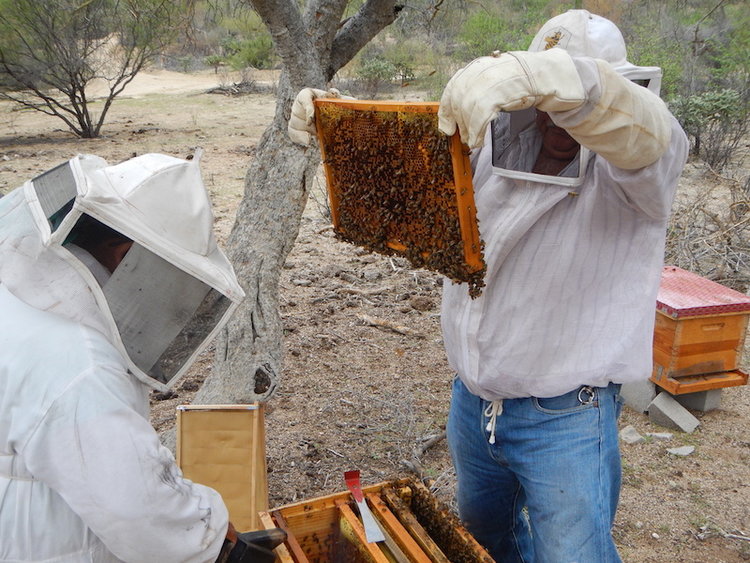
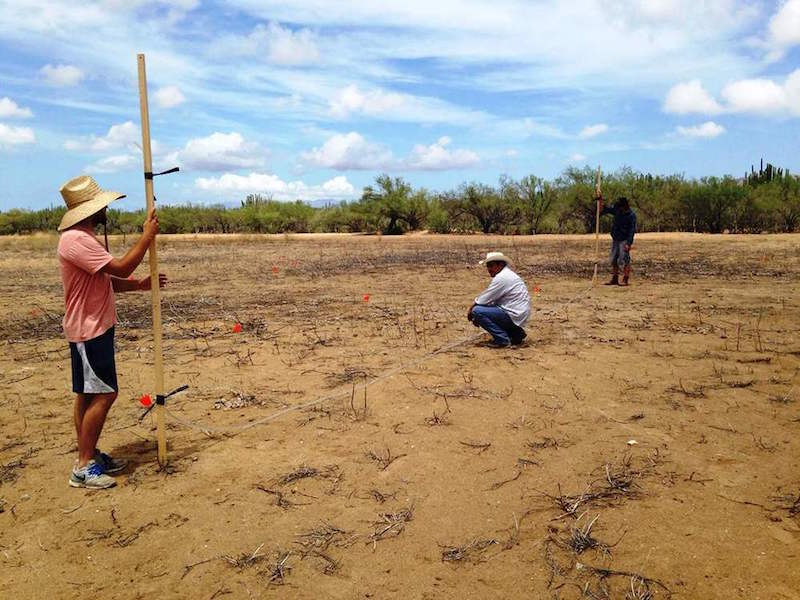
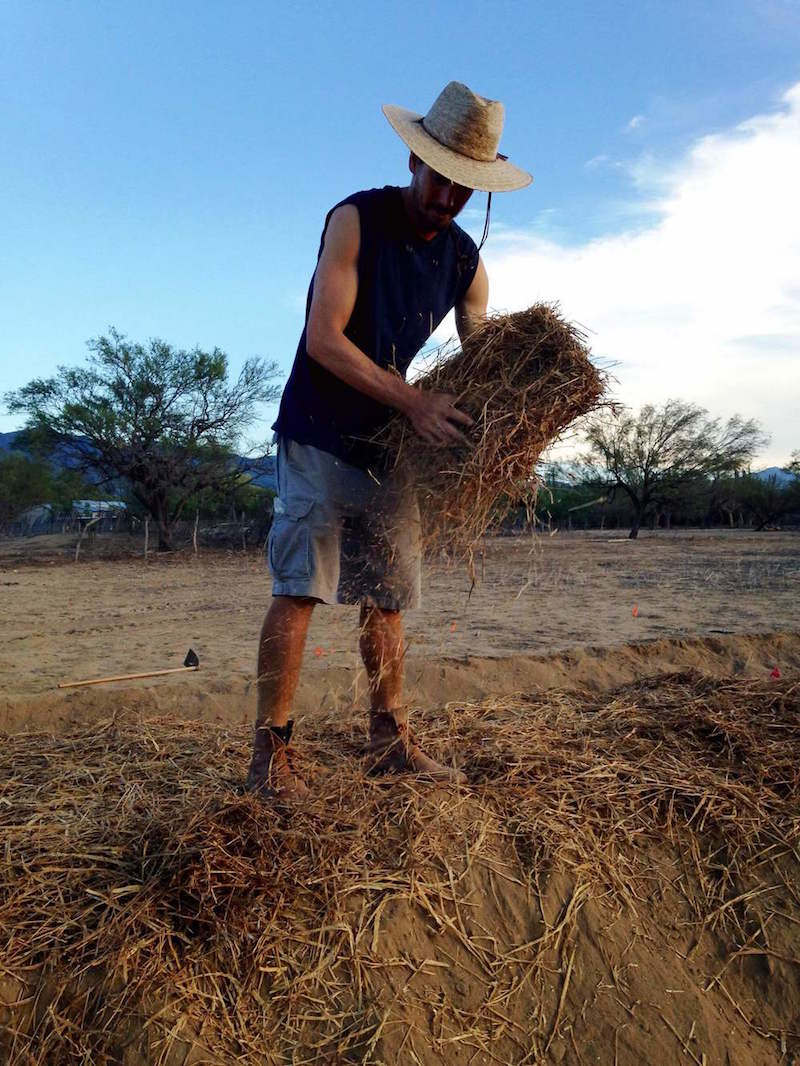


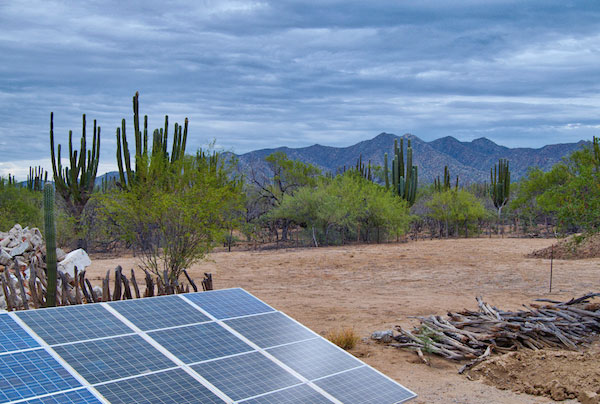
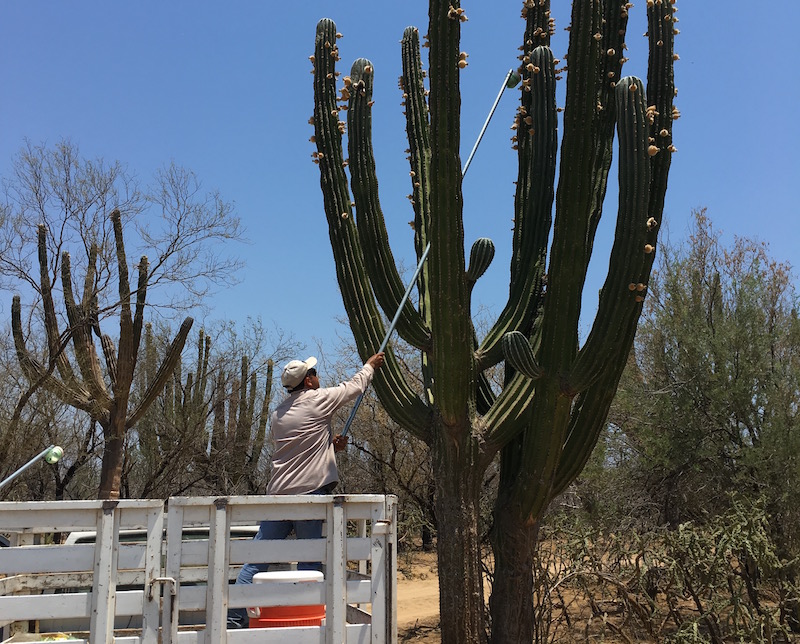
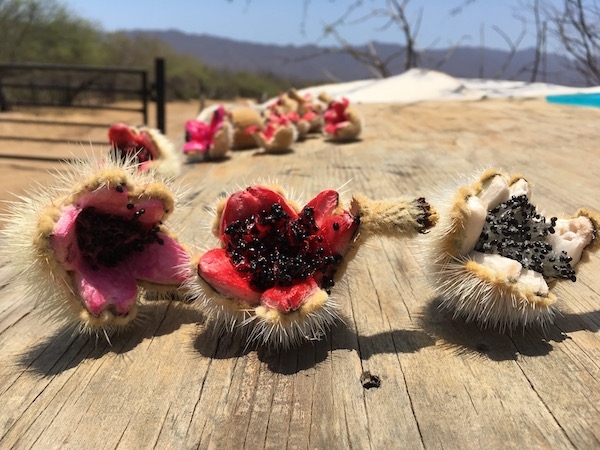
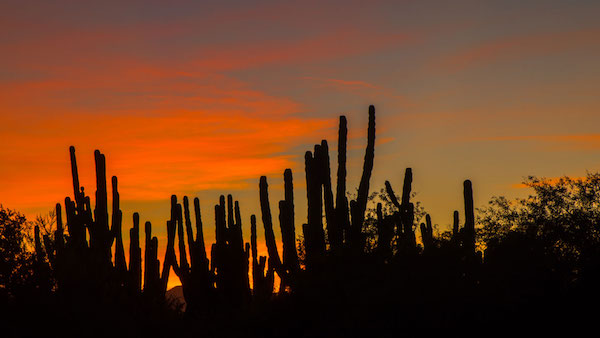
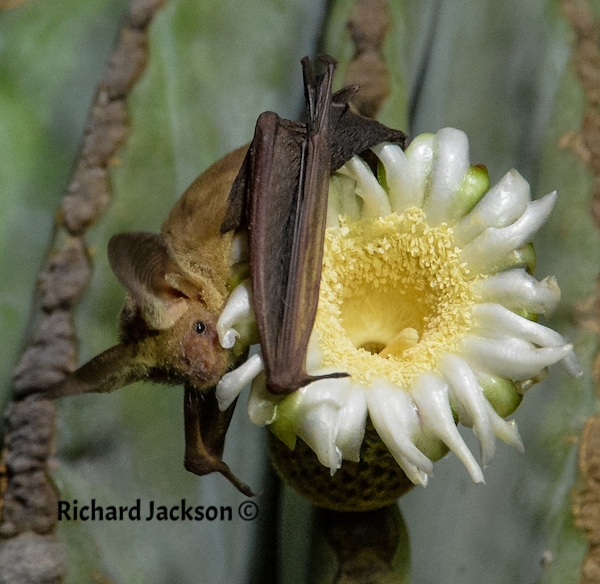
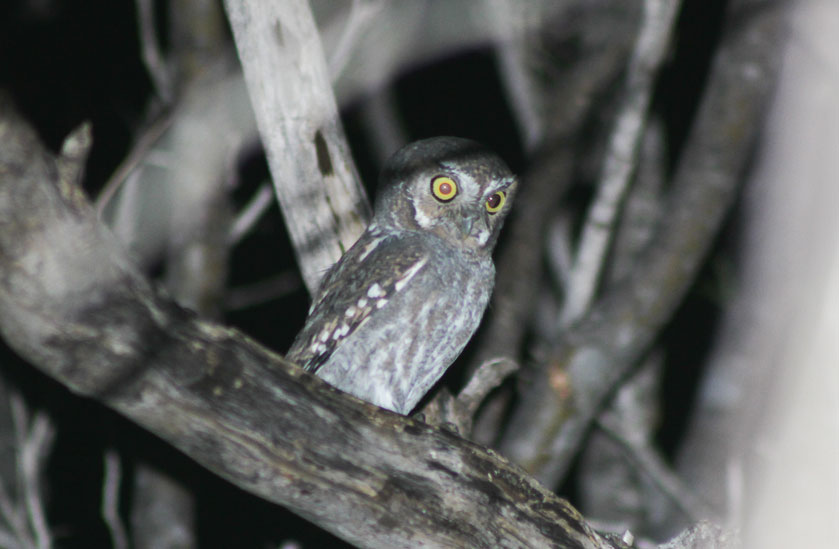

Pallid bat on cardon cactus flower — Photographer Richard Jackson ©
* When we first acquired this holding, about three hectares had been scraped of most of its vegetation. Although we are fortunate that relatively little of Rancho San Martín had been disturbed, farming practices elsewhere in the valley of San Juan de los Planes have used large amounts of chemicals and water.





